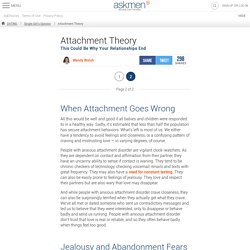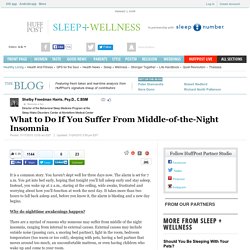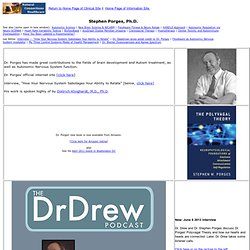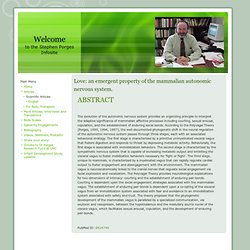

Why a Physics Revolution Might Be on Its Way. The field of physics may be turned on its head soon, said renowned physicist Nima Arkani-Hamed during a live lecture from the Perimeter Institute for Theoretical Physics in Waterloo, Canada.

For one, he said, the tried and true physics of relativity and quantum mechanics don't get along well. The problem is that in some sense, the principles behind these theories seem to be impossible when physicists dig a little deeper into them, Arkani-Hamed said. Scientists run into a lot of problems when they try to apply these theories to the entirety of space and time. The two ideas are also incredibly constraining, and they make it challenging for physicists to think outside the box and develop new ideas and theories, Arkani-Hamed said. [The 9 Biggest Unsolved Mysteries in Physics] "It's almost impossible to monkey around with the rules and not be wrong immediately," Arkani-Hamed said. An unexplained macroscopic universe But quantum mechanics also poses a problem. Physics frontiers. Creating Change: Tom Myers on Yoga, Fascia and Mind-Body Transformation Modern science is just catching up to the ancient wisdom of the mind-body connection and the effect that mental patterns (e.g., stress) can have on the body through biochemical pathways.

Does this connection go the other way? That is, if mind affects body, is it possible to change our mental and emotional patterning via the body as well? Indeed, yes, says Anatomy Trains author Tom Myers in this interview. Through bodywork and some types of "exercise," like yoga, we can release psychological trauma by addressing chronic tension patterns and holdings in the body. Understanding Your Fascia. Why didn't anyone mention fascia earlier?

Because not many people know that much about it. Fascia's messy stuff. It's hard to study. Anxious Attachment. Page 2 of 2 When Attachment Goes Wrong All this would be well and good if all babies and children were responded to in a healthy way.

Sadly, it’s estimated that less than half the population has secure attachment behaviors. What's left is most of us. We either have a tendency to avoid feelings and closeness, or a confusing pattern of craving and mistrusting love — in varying degrees, of course. People with anxious attachment disorder are vigilant clock-watchers. And while people with anxious attachment disorder crave closeness, they can also be surprisingly terrified when they actually get what they crave. What to Do If You Suffer From Middle-of-the-Night Insomnia It is a common story.

You haven't slept well for three days now. The alarm is set for 7 a.m. You get into bed early, hoping that tonight you'll fall asleep early and stay asleep. Hidden and unexplained: feeling the pain of fibromyalgia. YouTube Playlist : fascia under the skin. Polyvagal Theory. CN X.

Vagus Nerve. Sympathetic+nervous+system.jpg (JPEG Image, 600x642 pixels) Psychoneuroendocrinology : LOVE: AN EMERGENT PROPERTY OF THE MAMMALIAN AUTONOMIC NERVOUS SYSTEM. Social Engagement System. The ventral vagal system is involved with most aspects of social contact and pleasure. It guides eye contact, hearing, eating, speech, singing, nursing, kissing, smiling, and some would say, direct heart to heart contact. Sympathetic nervous system. The sympathetic and the parasympathetic nervous system are parts of what is commonly called the autonomic nervous system.

(Autonomic = can not be controlled by the mind). You can say that these systems work in balance with each other and directly or indirectly affect almost every structure in the body (e.g. heartfrequence, heartcapacity, lumbar function, kidneys, blood vessels, stomach and intestines) The sympathetic nervous system has an active "pushing" function, the parasympathetic has mainly a relaxing function. Stephen Porges, Ph.D.: Information and Links. Stephen Porges, Ph.D.

Stephen Porges: POLYVAGAL THEORY [gives theoretical background for ANS work of Klinghardt] The work of Dr. Stephen Porges, this helps explain some puzzling aspects of human Autonomic Nervous System behavior. Dr. Porges founded the Institute for Child Study where he has developed interventions that help children develop more control of their autonomic function and this improves the social dynamics of their relationships.
Careful anatomical study has revealed nerve fibers from higher centers of the brain are contained in what is considered a main autonomic nerve bundle, the Vagus Nerve. In addition, the "Triune Autonomic Nervous System" gives added value to our recommendations that patient consider Family Constellation Work or Family Dynamics Work as part of their integrative medicine program. Viva Las Vagus Nerve. A corny title – but a cool nerve.

The 10th of the cranial nerves, it is often called the “Nerve of compassion” because when it’s active, it helps create the “warm-fuzzies” that we feel in our chest when we get a hug or are moved by a chick-flick. The vagus nerve is really a bundle of nerves that originates at the top of the spinal cord and enervates all sorts of organs. Here’s a picture: (Peter Jurek, www.peterjurek.com)
Love: an emergent property of the mammalian autonomic nervous system. The evolution of the autonomic nervous system provides an organizing principle to interpret the adaptive significance of mammalian affective processes including courting, sexual arousal, copulation, and the establishment of enduring social bonds.

According to the Polyvagal Theory (Porges, 1995, 1996, 1997), the well-documented phylogenetic shift in the neural regulation of the autonomic nervous system passes through three stages, each with an associated behavioral strategy. The first stage is characterized by a primitive unmyelinated visceral vagus that fosters digestion and responds to threat by depressing metabolic activity. Chewing-pencil-410x290. Molmedvagusmacroph1. Gimo2-f7. Vagus_nerve. Amygdala activation. Polyvagal Theory. Phylogenetic Subsystems/Stages[edit] The vagus nerve is a primary component of the autonomic nervous system. Polyvagal theory outlines the structure and function of the two distinct branches of the vagus, both of which originate in the medulla.[1] More specifically, each branch is associated with a different adaptive behavioral strategy, both of which are inhibitory in nature via the parasympathetic nervous system (PNS). The vagal system is in opposition to the sympathetic-adrenal system, which is involved in mobilization behaviors.
According to polyvagal theory, these opposing systems are phylogenetically arranged.[1] The Dorsal Vagal Complex[edit] Amazon. The polyvagal theory: New insights into adaptive reactions of the autonomic nervous system. Polyvagal_Theory. THE AMYGDALA AND ITS ALLIES. Motorsomato. Motorsomato. Homunculus. Central pattern generator. Central pattern generators (CPGs) are biological neural networks that produce rhythmic patterned outputs without sensory feedback.[1][2] CPGs have been shown to produce rhythmic outputs resembling normal "rhythmic motor pattern production" even in isolation from motor and sensory feedback from limbs and other muscle targets.[1][2] To be classified as a rhythmic generator, a CPG requires: 1.
"two or more processes that interact such that each process sequentially increases and decreases, and 2. that, as a result of this interaction, the system repeatedly returns to its starting condition.[1] Anatomy and physiology[edit] Localization[edit] Various molecular, genetic and imaging studies have been conducted as for the localization of the CPGs. Anatomy[edit] The classical view of CPGs, as specific networks of neurons dedicated to this function alone, has been challenged by numerous data obtained mostly on the central nervous system of invertebrates. Neuromodulation[edit] Feedback mechanism[edit] Overview of brain function. Fascial research German spoken/English subtitles. Strolling Under The Skin (part 2) Strolling under the skin. Temporoparietal-fascial-flap1. Temporoparietal-fascial-flap1. Fascia. Fascia. Tremors. Trauma & Tension Releasing Exercises - TRE - David Berceli.
Trauma Prevention » All About David Berceli & Trauma Releasing Exercises. Restoring Emotional Balance - The Defining Moment Television Talk Show.